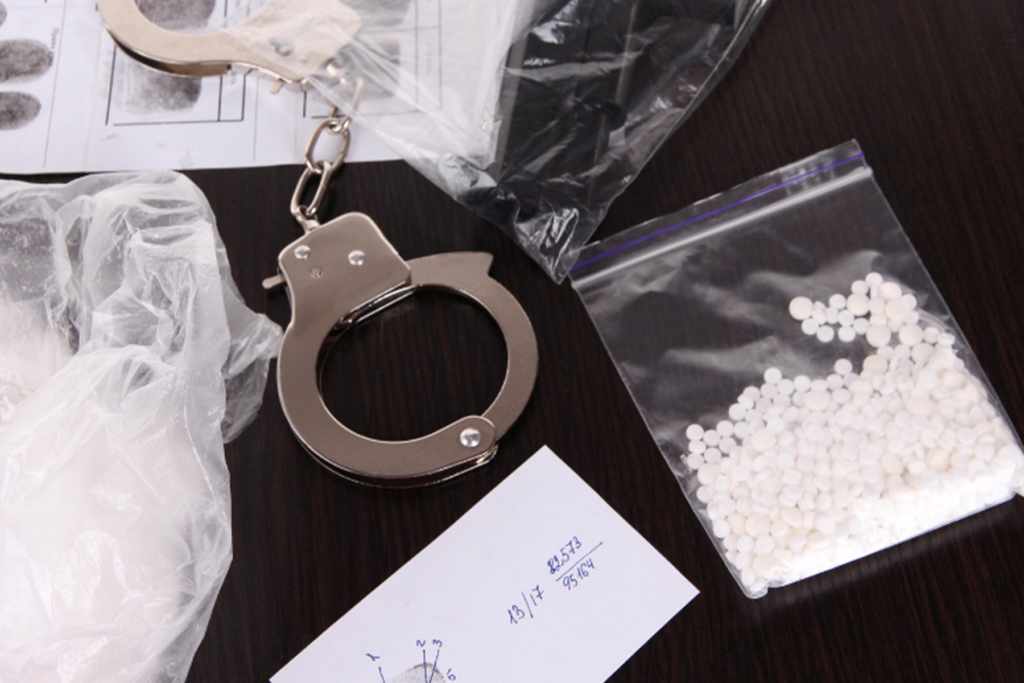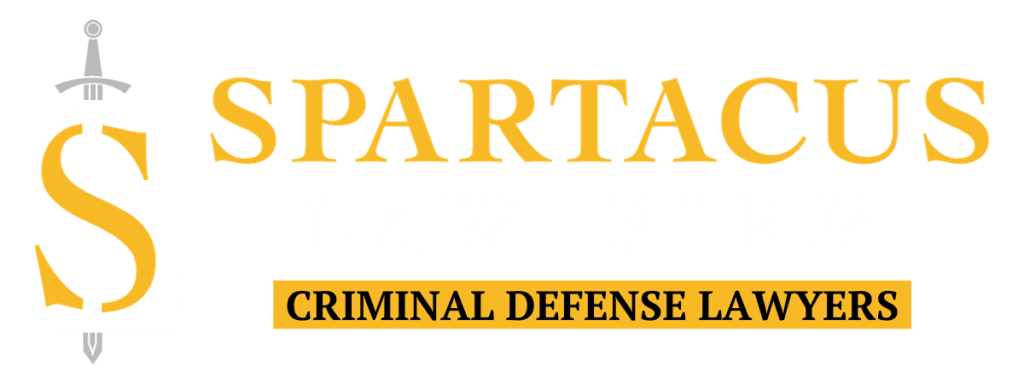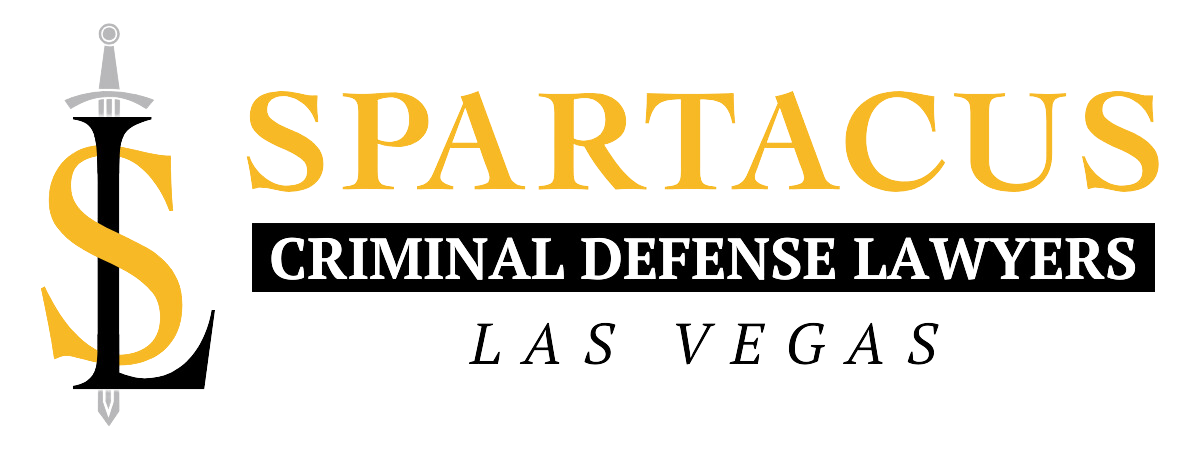Las Vegas Drug Trafficking Attorney
Other Practice Areas
Contact Us
Drug Trafficking Defense In Las Vegas, NV
Table of Contents
ToggleDefinition Of Drug Trafficking
According to NRS 453.3385, drug trafficking is defined as knowingly or intentionally selling, manufacturing, or bringing controlled substances into Nevada. Any schedule I drug or schedule II drugs other than marijuana charges or being in actual or constructive possession of four grams or more of a schedule I or schedule II drugs.
Schedule I drugs, such as heroin, LSD, mescaline, MDMA (ecstasy), and methaqualone, have a high potential for abuse with no proven medical use. Schedule II drugs include methamphetamine, oxycodone, methadone, Dilaudid, and Vicodin. The sentence for drug trafficking depends on the amount of schedule I and schedule II substances involved.
The Nevada drug trafficking law also covers certain club drugs, such as flunitrazepam (also known as Rohypnol, gamma-hydroxybutyrate (GHB), or any substance for which flunitrazepam or gamma-hydroxybutyrate is an immediate precursor) and ketamine. Depending on the quantities of drugs involved, a conviction for trafficking these controlled substances can result in several years in prison and hefty fines.
Common Controlled Substances Trafficked In Las Vegas
If you’re facing drug trafficking charges in Las Vegas, Travis County, or the state of Nevada, contact the Spartacus Law Firm right away. Our experienced Las Vegas drug trafficking defense attorney will make every effort to help you avoid the most serious penalties related to your alleged offense. Controlled substances commonly trafficked in Las Vegas can include illegal drugs, street drugs, chemicals, man-made substances, and prescription pills, such as:
- Heroin
- Cocaine
- Crack
- LSD
- GHB
- Oxycontin
- Hydrocodone
- Vicodin
- Opium
- Opiates
- Codeine
- Ecstasy
- Methamphetamines
- Morphine

Penalties For Drug Trafficking In Las Vegas
Nevada’s drug laws have been completely revised. The new regulations additionally include significant changes in potential drug penalties. In addition, the revised legislation establishes distinct sentences for various weight thresholds of various controlled substances. Prior drug laws had varying sentencing requirements for schedule I and II controlled substances, whereas the penalties are now identical for both types of drugs. The following are the new weight levels and possible punishments under the amended legislation:
Schedule I & Schedule II Controlled Substances
- A conviction for trafficking 100 grams or more but less than 400 grams of these drugs is a Category B felony, punishable by two to 20 years in prison.
- A conviction for trafficking more than 400 grams of these drugs is a Level A felony. Depending on the circumstances of the case, a Category A trafficking conviction may result in 10 years to life imprisonment or 25 years imprisonment with parole eligibility after 10 years.
Flunitrazepam and GHB
- A person who sells 100 grams or more but less than 400 grams of one kind of illegal drug is guilty of a Category B felony and faces 2 to 20 years in jail.
- A conviction for trafficking more than 400 grams of either drug is a Class A felony, punishable by up to life imprisonment or 25 years in prison with parole eligibility after 10 years.
Marijuana
- A conviction for trafficking 50 pounds or more but less than 1,000 pounds of marijuana is a Category C felony. It can result in a fine of up to $25,000 if convicted of this crime.
- A conviction for trafficking between 1,000 and 5,000 pounds of marijuana is a Category B felony, punishable by 2 to 10 years in prison and a fine of up to $50,000. The same penalties apply if the amount of marijuana concentrate is between 20 and 100 pounds.
- Finally, a charge for trafficking more than 5,000 pounds of cannabis or more than 100 pounds of marijuana concentrate is a Category A felony. The penalties include 15 years or life in prison, with eligibility for parole beginning after five years, as well as a fine of up to $200,000.

Federal Drug Schedule and Drug Trafficking Penalties
- Schedule I – This schedule contains controlled substances that have a high potential for abuse and have no known or accepted medical purposes.
- Schedule II – This schedule contains substances that have a high potential for abuse, but have commonly used or accepted medical applications, with certain restrictions.
- Schedule III – The substances in this schedule have less potential for abuse than schedule I or II substances, and are commonly used for medical purposes in the United States.
- Schedule IV – This schedule contains controlled substances with a lower potential for abuse than substances in schedule III, and are commonly used for medical purposes.
- Schedule V – The substances in this schedule have the least potential for abuse, and are commonly used for medical uses in the United States.

Frequently Asked Questions
What Qualifies As A Controlled Substance?
What factors influence whether a drug is designated as a schedule I, V, or somewhere in between? The Comprehensive Drug Abuse Prevention and Control Act of 1970 created five “schedules” for controlled substances. Congress established the initial list of drugs on each of the five schedules, but it’s primarily the Drug Enforcement Administration (DEA) and Food and Drug Administration (FDA) who make that decision now. The goal of any given substance’s placement within a particular schedule is to assess the substance’s “possibilities for abuse” and whether it has any recognized, authorized, or medicinal purposes.
In Nevada, the scheduling of medicines is governed by the Nevada State Board of Pharmacy, and a specific list is maintained in Chapter 453 of the Nevada Administrative Code, which is based on the classifications established by the federal government. There are five separate “schedules” for medications, with the first two only applicable to drug trafficking. The term “schedule” simply refers to a list. When determining where a medication belongs, the Board considers a variety of criteria.
What Amount Of Drugs Are Required To Be Charged With Trafficking?
The only substantive distinction between Possession of a Controlled Substance and Trafficking in a Controlled Substance is the sort and quantity of drugs involved.
- If the drugs in question are Schedule I or II substances or medicines that contain Flunitrazepam (Roofies) or Gamma-Hydroxybutyrate (GHB) but aren’t marijuana, a person must have 100 grams or more of the substance to be charged with drug trafficking.
- If the drug in question is marijuana, a person must possess at least 1,000 pounds of it in order to be charged with drug trafficking.
- If you’re caught with concentrated cannabis, you’ll be charged with drug trafficking if the amount is less than 1 pound.
For the purpose of drug trafficking, Schedule I and II substances, as well as those that include Flunitrazepam (Roofies) or Gamma-Hydroxybutyrate (GHB), are included. This means that even if a person has a large amount of any substance or drugs listed in Schedules III, IV, or V, they would not be charged with trafficking. They might still be charged with other offenses such as Possession of a Controlled Substance or Possession of a Controlled Substance for Sale. The lines can often be blurred in these types of drug cases, that’s why it’s highly recommended that you work with a skilled Las Vegas drug trafficking defense attorney as soon as you’ve found out that you’re being charged.
What Defenses Are There To Drug Trafficking Charges?
Drug trafficking charges in Nevada are similar to drug possession charges in that it requires you to prove other people possessed the drugs you’re accused of having. If the prosecutor can’t show how you had the drugs, you can’t be convicted. Possession may be actual or constructive.
Actual means the illicit substances are on your person somewhere; “constructive possession,” on the other hand, implies that you exercised dominion and control over them. You might face drug trafficking charges in Nevada if authorities find illegal substances in your bedroom or automobile, for example, based on a theory of constructive possession. The phrase “constructive possession” refers to when more than one person has access to illicit substances at the same time. This is frequently employed to charge numerous people in a property or vehicle with drug possession or trafficking. Even if you were not aware that drugs were in your car or in your house, you cannot be considered constructive possessors of those substances.
The quantity of a controlled substance is also relevant in the defense of drug trafficking charges in Nevada. As previously stated, the only distinction between possession and trafficking as far as what the prosecutor must show is the amount and type of drug. However, proving that the drugs were genuinely that much may be difficult for the prosecution.


